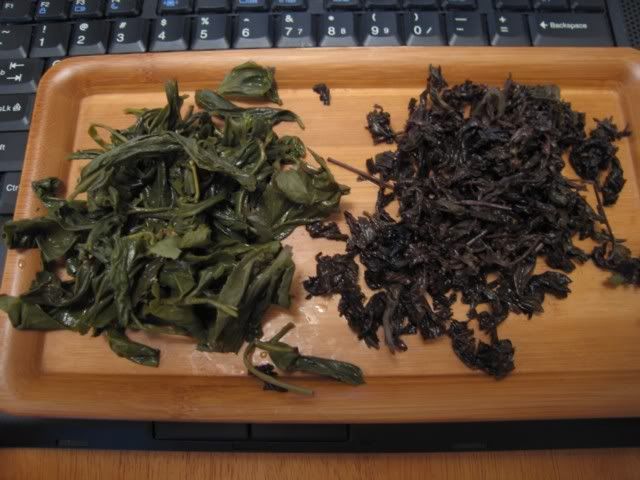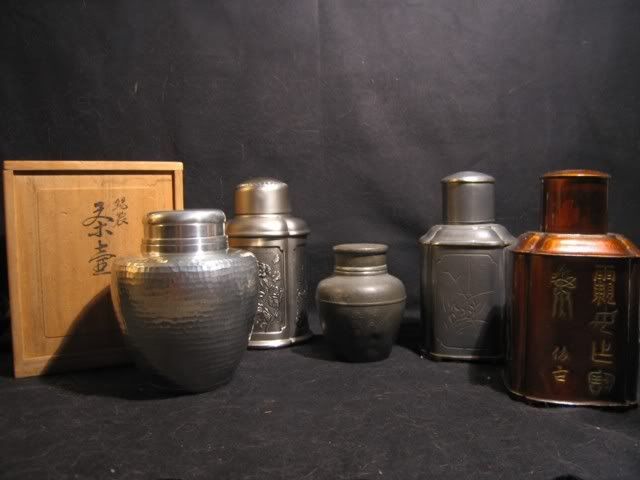As Wisdom_sun pointed out in his comments to my post a few days ago, talking about “storage” of puerh is not just merely storage… it’s conditioning. He’s absolutely right in that regard, so I will try to remember to use this term from now on 🙂
I think I have talked about this in passing before, but what I have noticed more clearly this time around visiting Hong Kong and also talking to the owner of the teashop here in Taipei is that there are clearly two trends, or two schools of thought, in puerh conditioning.
The first is the old school. Wet storage is good. Wet, however, doesn’t mean soaking in water, mould growing all over wet (that’s cooked puerh). Wet means a high level of humidity in a more or less controlled environment. It does involve a fair bit of skill and know how, as well as experience in doing these and to know what teas will need how much in the conditioning of such teas. Talking to old tea drinkers in Hong Kong, they will almost all tell you that a cake with a touch of wet storage age much better and faster. It was interesting to see the teashop owner here echo the same view.
The other school is the pure dry storage school. Dry, of course, doesn’t really mean bone dry either. I think what dry storage means really depends on the person you talk to. Many consider dry storage to be simply a tea that has not entered a traditional “wet” storage facility. Others take it quite literally — recall my experience with Xinjiang conditioned tea (Xinjiang has desert weather) that tasted thin, sharp, and unpleasant overall. I have met many a drinker and shop owner in Beijing who will refuse to drink anything that tastes remotely wet stored. Anything stored in the Guangdong area they deem to be wet, even after a year or two, when to me they taste quite normal and pleasant.
The overwhelming reason I’ve heard with this particular trend is that it is unhealthy to drink wet stored puerh. The mould really turns people off, and they think it is a health hazard. The same view is echoed by many on Sanzui, a Chinese forum for tea. It’s an interesting thing, really. After all, many people grew up in Hong Kong drinking wet stored puerh, and the city’s population isn’t exactly suffering from some serious puerh-related sickness, so why people worry about it is beyond me. It’s like mouldy cheese… it looks gross, it smells gross, but can be quite tasty, albeit an acquired one. I think puerh is even less of an acquired taste than, say, Roquefort.
I can see why there’s an argument. People in Beijing, for example, used to drink jasmine, mostly. They then switched to green, and then green tieguanyin, and now, young puerh. Their tastes are light in general, and therefore a heavy, wet stored puerh might not suit their style (though oddly enough, people who refuse wet-stored puerh have no problem drinking cooked puerh). This sort of preference is reflected in tastes for other kinds of tea too. It’s difficult to find a good roasted oolong in the north. It’s much easier to find one in Hong Kong or Taiwan. Perhaps we can chalk this down to regional preference.
As for who’s right in their theory on conditioning… I suppose it depends on who you’re talking to. I have, however, noticed a slight trend — more often than not whoever owns the new cakes will tell you dry storage is good. Whoever owns some old stuff to sell will tell you wet storage is good. Given that, I tend to trust my senpai who only buy for their personal consumption. I think some wetness is not a bad thing, and in a home storage condition, care must be taken to make sure the tea is not too dry. That’s partly why I decided to stick my tea in Hong Kong in the family home (although mid-Ohio, curiously enough, is awfully wet). Is it wise to buy slightly wet stored tea to store at home? I suppose it might be. I also wonder if whatever’s gathered in a cake of wet stored tea will pass on to the dry stored one in a house. It should, I’d think. That’s why I want to see if there’s a way to figure out what an optimal condition is… I’m curious, for example, to see what happens to the cakes that Phyll put in his wine storage. I’m also curious to know what will eventually happen to the cakes that happen to be stored in the perpetually wet but cool climate of England. We’ll probably only find out in at least a few years’ time, and I certainly am not as brave (although I have a few cakes that travel with me in the US as I move from place to place).
But at the end of the day… maybe it’s the fact that we keep these cakes and watch them age that makes it fun. Of course, nobody wants a cake to turn out horrible, but if it tastes quite ok 10 years from now, it’s probably worth much more to the owner than if he were to buy it off the market 10 years from now.






 RSS - Posts
RSS - Posts
Interesting.... would 250C in my oven work?